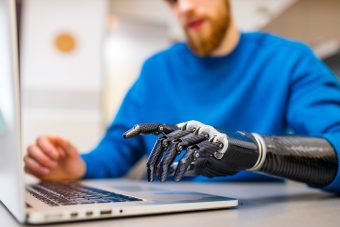Understanding Prosthetic Limbs: Types and Functions
For individuals who have experienced limb loss due to injury, disease, or congenital anomalies, prosthetic limbs provide a beneficial alternative. With advancements in prosthetic technology, individuals can lead a near-normal life, participating in activities that were once unreachable to them. This article aims to give insight into prosthetic limbs; their types, functions, and how they operate.
What is a Prosthetic Limb?
Prosthetic limbs are devices created for individuals to replace a missing leg or arm when the body is unable to produce one. They function as an alternative for individuals who are not eligible for transplantation or are not interested in it.
Prosthetic limbs come in various shapes and sizes, depending on the individual specifications. They can be categorized into lower-limb prostheses, upper-limb prostheses, and partial hand prostheses.
Lower-Limb Prostheses
Lower-Limb Prostheses are designed to replace the missing part of the leg starting from the thigh down to the foot or toe. The components of a lower-limb prosthesis include; a socket – which is fixed to the residual limb, knee section (when relevant), foot, and a pylon. The materials used to create lower-limb prostheses include; carbon-fiber composites, acrylic resin, and titanium.
There are two types of lower-limb prostheses, exoskeletal and endoskeletal prostheses.
Exoskeletal Prostheses
Exoskeletal prostheses are the oldest types of prosthetic limbs used. They comprise a wooden or metal skeleton structure that encompasses the residual limb, with the outer layers created from leather or plastic. These prostheses are most suited for individuals whose residual limb is stump-shaped with no curves. They are mostly used for light walking and not intense physical exercises.
Endoskeletal Prosthetics
Endoskeletal prosthetic limbs are lighter and more flexible compared to exoskeletal prosthetics. They comprise an inner frame made of lightweight materials like titanium or carbon, with a detachable outer layer. The detachable outer layers have different shapes, sizes, and colours, which allows the user to choose their preferred choice. Endoskeletal prosthetics are more suited for individuals with an active lifestyle because of their flexibility and durability.
Upper-Limb Prostheses
Upper-limb Prostheses are designed to replace missing arms, starting from the shoulder or elbow down to the fingers. The design of upper-limb prostheses depends on the level and type of the amputation. They can be categorized into body-powered prostheses and externally powered prostheses.
Body-Powered Prostheses
Body-powered prostheses are a type of upper-limbs prostheses, commonly referred to as hook and cable prostheses. They function by providing a mechanical connection between the harness and the prosthetic limb. The user moves the harness, which, in turn, moves the hook to perform the desired activity. These prostheses are ideal for individuals who are not interested in advanced prosthetic technology.
Externally Powered Prostheses
Externally powered prostheses make use of electrical components to provide movement. They are controlled by electrical impulses sent to the prosthesis via Bluetooth connected to a smartphone. These prostheses are more advanced and are often provided for individuals with more extensive upper-limb amputations.
Partial Hand Prostheses
Partial hand prostheses are designed to replace the missing part of the hand, fingers or digits. They are more suited to individuals with partial hand loss due to trauma, injury or birth anomalies. They are designed to provide grip and motion precision and restore some level of finger and grip dexterity.
Functions of Prosthetic Limbs
Prosthetic limbs provide an alternative for individuals who have lost their limbs. They provide several functions, some of which include:
– Mobility: Prosthetic limbs provide mobility for individuals who would otherwise be limited without them. They help in moving from place to place, performing daily activities like personal grooming or house chores.
– Support: Prosthetic limbs provide support for individuals, especially lower-limb prosthesis. They help individuals stand, balance and move around without any help.
– Restoration of Self-esteem: Individuals who lose their limbs usually experience a loss of self-esteem. However, with prosthetic limbs, they can live a near-normal life and participate in activities they once enjoyed, causing them to have a sense of purpose and value.
Conclusion
Prosthetic limbs have provided an alternative for individuals who have lost their limbs due to injury, disease or congenital anomalies. They come in various types, with their functions tailored to the individual’s specifications. Prosthetic limbs’ advancements have given individuals the opportunity to participate in activities previously unavailable to them, providing them with a sense of purpose and value. With technological advancements in prosthetic limbs, the future is bright for individuals who have experienced limb loss.
If you’re interested in learning more about prosthetics, or would like to begin the process of obtaining a prosthetic, don’t hesitate to contact us today!
